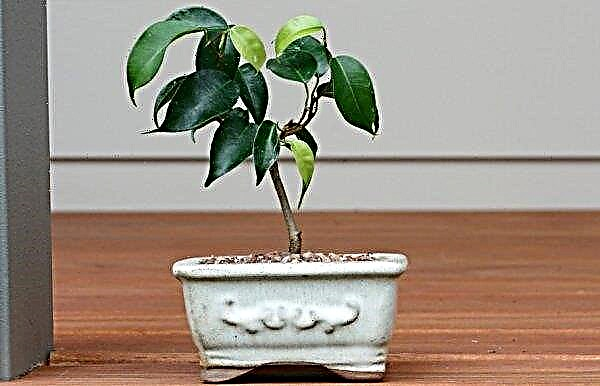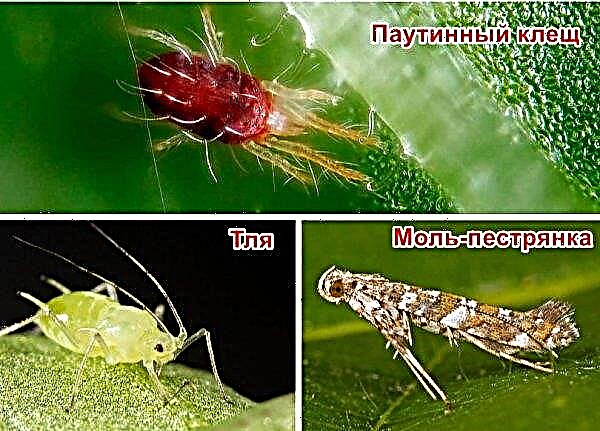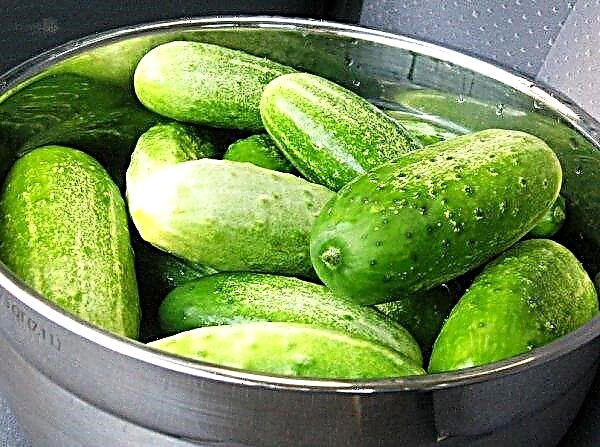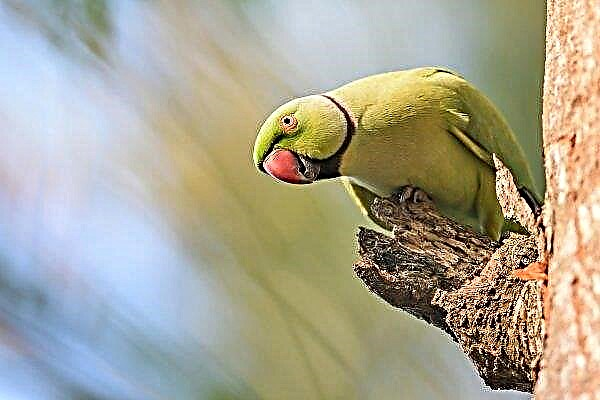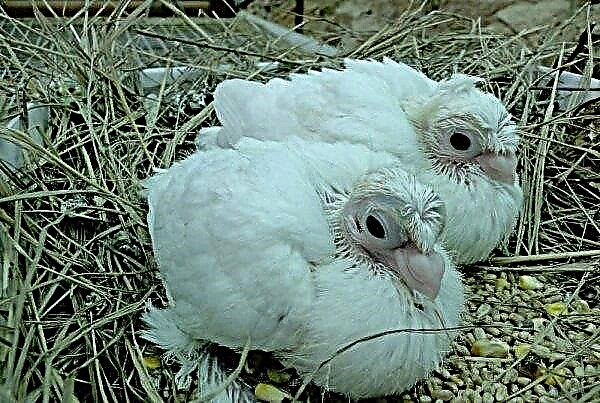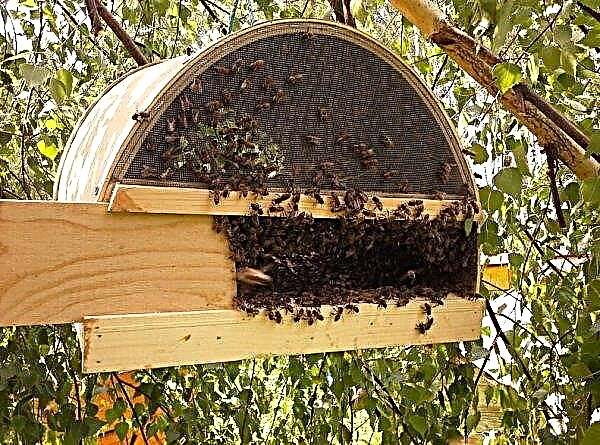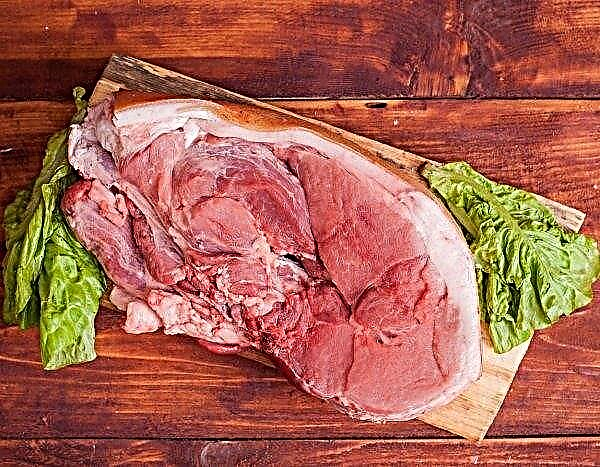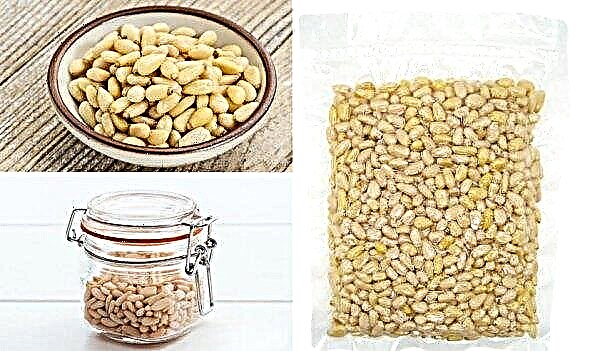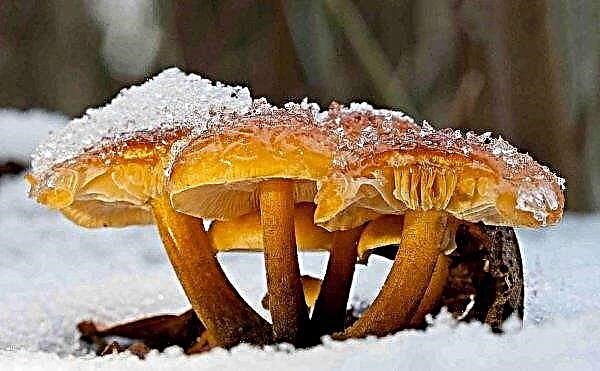The French grape variety tomato was bred by the Siberian Garden agricultural firm and is positioned as a promising pickling plant. A variety with beautiful appetizing fruits is distinguished by simple care, the nuances of which will be described in this article.
Grade description
The variety of the determinant group matures in the medium term. The growth of the bush is about 1 m (in the greenhouse above).
Characteristics of a tomato are as follows:
- finger-shaped fruits, smooth;
- dense bright red skin;
- fruit weight - 80–100 g;
- the pulp is juicy and tasty;
- for a bunch of 6-10 tomatoes.

A bush can form from 5 to 20 clusters, depending on growing conditions. The average yield is 4–5 kg per bush, but if planted in covered ground and regularly irrigated and fed, up to 20 kg.
Advantages and disadvantages
- Tomatoes of this variety have the following advantages:
- good keeping and transportability of fruits;
- the possibility of ripening after removal;
- beautiful view in whole-fruit preservation;
- easy care;
- disease resistance;
- almost do not require pinching.
- The disadvantages of the French grapevine can be called such features:
- late ripening in the open ground in the north;
- the need for tying.
Self-growing seedlings
Such tomatoes can be grown both from a purchased bag and from seeds collected from grown plants on their own. For seedlings of this variety, standard agricultural technology is used.

Optimum timing for sowing
One of the main conditions for growing healthy seedlings is sufficient illumination, so tomatoes can be sown before March only with the installation of additional light sources.
This variety is sown 50-60 days before the plants are transplanted to a permanent place. In most regions, planting dates in early or mid-March.Important! For tomato seedlings you need daylight hours from 15 to 17 hours.
The soil
This variety does not require a special soil composition, so you can use universal soil for seedlings, which is sold in specialized stores. If you have the necessary components, you can prepare good soil yourself.
For tomato seedlings, the following composition is recommended:
- equal parts of turf land, rotted sawdust, humus and peat;
- 1.5 cups of ash, 1 tsp. urea, 3 tbsp. superphosphate and potassium sulfate (per 1 bucket of soil mixture).

Before making the mixture, it is necessary to disinfect the turf soil.
There are several ways to destroy pathogens and pest larvae:
- freezing at -15 ° C and subsequent thawing (3-5 days), repeat the process 2-3 times;
- steaming for 7-8 minutes;
- calcination in the oven at + 70–90 ° С;
- disinfection with a solution of potassium permanganate.
Capacity for growing
The main requirement for sowing containers is drainage holes and a cover. They can be made of plastic or peat, as well as made at home from packaging for juice and milk. Instead of a cover, you can put a sheet of glass or tighten the box with film. The purpose of the shelter is to bring the conditions closer to the greenhouse.
Seed preparation
To ensure maximum seed germination, pre-sowing treatment is performed.
Did you know? The optimal seed age for planting is 2-3 years.
First, seeds with noticeable damage or too small are rejected.
Then you need to:
- Dip the seeds in a weak solution of potassium permanganate to check germination. Suitable specimens sink to the bottom.
- Based on the instructions, the seeds are soaked in growth stimulants, for example, in “Kornevin” or “Zircon”.
Sowing seeds
The depth of sowing seeds of this variety is 1 cm. The sowing pattern is 3x1.5 cm. The seeds are sprinkled with soil and watered with warm, settled water. You can not use a watering can: a strong jet of water will wash the seed deep. For spraying seedlings, a spray gun is best suited.
Landing is covered and transferred to a warm place (+ 23–25 ° С). When the earth dries, you need to remove the cover and moisten the surface. If condensation occurs, the droplets on the walls must be wiped off.
Seedling Care
Shoots of French bunch should appear in 7-10 days, after which the container is provided with a temperature of + 15-16 ° C for about a week. Then the box is placed in a lit place at a temperature of + 20–22 ° С.
For health seedlings need:
- ambient light for at least 15 hours (avoid direct sunlight);
- watering under the root with warm water;
- airing, without drafts.
The appearance of a second true leaf indicates the onset of dive time. This process involves transplanting each seedling into a separate container and shortening the main root by one third.Did you know? Picking allows you to quickly build up small side roots, due to which the plant can then get more nutrients from the ground.
When diving, the plant is buried in new ground to cotyledonous (first) leaves. Watering after transplantation should be moderate.

Healthy plants do not need fertilizers. Signs of malnutrition will include yellowed lower leaves, stem extension, wrinkled leaves, or purple streaks. In this case, 10 days after the dive, make the first feeding, and then repeat after 2 weeks (according to instructions).
Seedling hardening
Hardening is a necessary part of preparing plants for transplanting to the main place. Seedlings must get used to new conditions, including sunlight and low temperatures. They begin to take plants outside 10 days before transplanting. Plants are planted so as to avoid direct sunlight for the first time. A draft should also be excluded. Start hardening with half an hour, gradually bringing the time to a whole daylight.
If the plants are taken out into the greenhouse, the doors to it are left open. In a city apartment, you can use the open balcony.Important! The critical temperature for tomato seedlings is +8 °WITH!
Planting seedlings in a permanent place
Landing in open ground is carried out after the threat of night frost disappears, usually this is the middle or end of May (depending on the region). The first days after landing it is recommended to cover the landing with agrofabric. In the greenhouse, plants can be transplanted earlier. On 1 square. m planted from 3 to 5 plants. The first watering is done with warm water, which should be left standing.
Outdoor Care
To get the maximum yield, it is recommended to follow the rules of agricultural technology below. This variety can be grown in a greenhouse, while the period of fruiting is significantly increased.
Watering
Watering is carried out in advance by defended water, which is heated in summer air to a temperature comfortable for plants. The main rule of watering tomatoes is to direct all the water under the root without touching the foliage. Installing drip irrigation allows you to saturate the soil as efficiently as possible. To retain moisture, it is recommended to lay a thick layer of mulch under the bushes.
Top dressing
Plants respond positively to top dressing, which spend 3-4 times per season. It is especially important to apply fertilizer during the formation of the ovary. Nitrogen components are added before the appearance of flowers, and after the appearance of fruits, superphosphate and magnesium sulfate are used.
Mineral fertilizers alternate with organic: humus, a solution of ash or iodine, fermented with mowed grass or biomixes.
Shaping and tying bushes
The seed producer claims the uselessness of pinching, however, according to gardeners, the bush gives a significant number of stepsons in the greenhouse, and sometimes in the open ground (especially in the southern regions). Thus, it is recommended to approach the issue individually and break down stepsons in case of thickening. Stepsoning is most safe to carry out on a hot sunny day.
The bush needs to be tied to a reliable trellis. It is not recommended to use a wire as a material for a garter, as it can damage the stem. Choose special materials or soft rope.
Soil care
Tomatoes prefer loose soil and the complete absence of weeds. In open ground, the use of mulching allows us to solve these problems, and also makes it possible to protect the soil from overheating and drying out, to protect the fruits from pollution and to accelerate their ripening.
Mulching is carried out immediately after planting and dry hay, humus, a mixture of compost and sawdust are used for it. Not suitable for tomatoes are pine bark and freshly cut grass, as well as newsprint.
Harvesting
Tomatoes of this variety can be removed in the phase of technical ripeness, as well as stand on the bush until fully ripened. These tomatoes ripen perfectly at room conditions and are distinguished by good transportability.
French grape tomato is suitable for gardeners with any experience growing vegetables. The variety shows good results even with the simplest care, and proper agricultural technology can significantly increase productivity.

